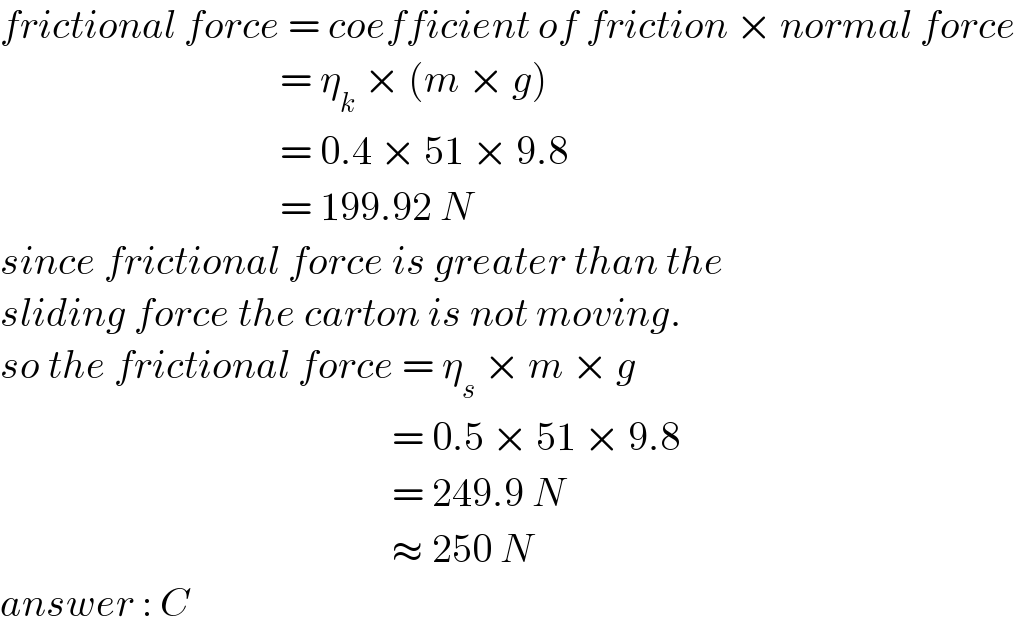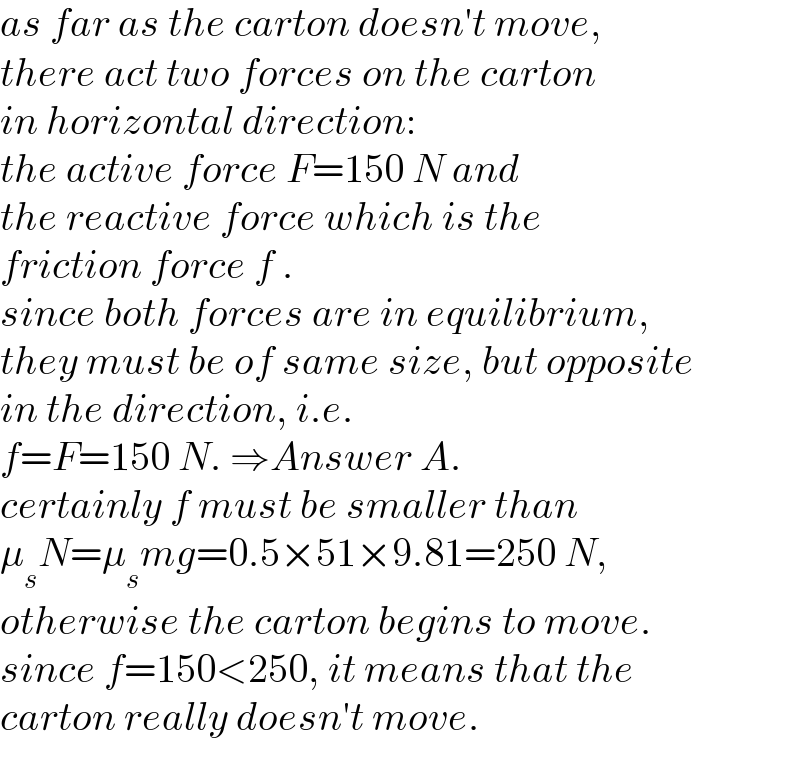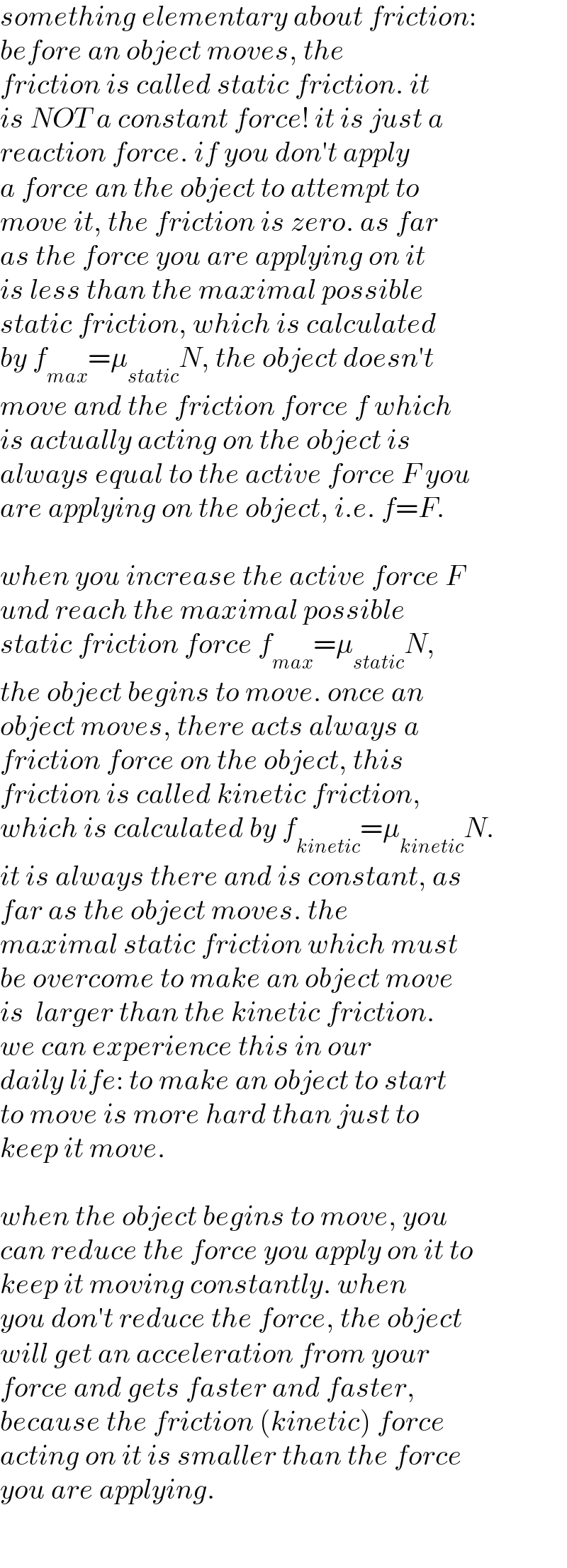
Question and Answers Forum
Question Number 169658 by Tawa11 last updated on 05/May/22

Commented by mr W last updated on 05/May/22

Commented by Tawa11 last updated on 05/May/22

Answered by kapoorshah last updated on 06/May/22

Commented by mr W last updated on 06/May/22

Commented by kapoorshah last updated on 06/May/22

Commented by mr W last updated on 06/May/22

Commented by mr W last updated on 06/May/22

Commented by Tawa11 last updated on 06/May/22

Commented by Tawa11 last updated on 06/May/22
![at kapoorshah sir. Thanks for your time. I reason like you before, but am sure 250N is not correct. That was why I posted the question to the forum. And sir mrW has cleared by doubt. [Ans = 150N]](Q169698.png)
Commented by mr W last updated on 06/May/22

Commented by Tawa11 last updated on 06/May/22

